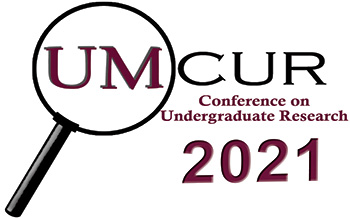Project Type
Poster
Faculty Mentor’s Full Name
Catherine Off and Jenna Griffin
Faculty Mentor’s Department
Speech Language Hearing and Occupational Sciences
Abstract / Artist's Statement
Background. Aphasia is a language impairment, typically resulting from left hemisphere strokes. Aphasia impairs the neural networks that allow individuals to read, write/type, speak, and understand spoken information, negatively impacting daily communication and quality of life. Intensive Comprehensive Aphasia Programs (ICAPs) are stroke rehabilitation programs that help people living with aphasia improve their language function, communicative participation, and quality of life. In response to COVID-19, ICAPs could no longer take place in-person, necessitating a rapid move to telehealth models. No evidence has been provided in the literature to demonstrate the efficacy or effectiveness of telehealth ICAPs.
Purpose. The purpose of this project was to compare language outcomes across two methods of ICAP delivery: telehealth (summer 2020) and in-person (summers 2014-2019).
Methods. Participants. Stroke survivors with chronic aphasia participated in in-person or telehealth ICAPs at the University of Montana (UMT). Five stroke survivors participated in the novel summer 2020 UMT telehealth ICAP (IRB #87-20). Fifty-three stroke survivors participated in 2014-2019 UMT in-person ICAPs (IRB #116-14). Procedures. Language outcomes were evaluated using the Western Aphasia Battery-Revised (WAB-R) aphasia quotient (AQ). Individual characteristics of the telehealth participants were matched with participants from the 2014-2019 in-person data set. Three participant characteristics were considered during this matching process: (1) age (+/- 10 years), (2) biological sex, and (3) time post-stroke (+/- 6 months). Pre- and post-ICAP WAB-R AQ scores were compared across telehealth and in-person participants to assess telehealth ICAP efficacy.
Results & Conclusions. The average change score on the WAB-R AQ for the telehealth cohort (5.42) was similar to the in-person cohorts (5.28), suggesting that telehealth delivery for ICAPs may be as efficacious as in-person delivery.
Significance. COVID-19 has changed the landscape of stroke rehabilitation for people living with aphasia – particularly for those living in rural regions like the Mountain West. Telehealth models of service delivery have the potential to increase access to post-stroke services for rural residents beyond the pandemic era. Preliminary evidence suggests that telehealth delivery of an ICAP has the potential to result in similar language outcomes as in-person ICAP delivery.
Category
Social Sciences
Sims and Buehler Presentation
Comparing Preliminary Telehealth Outcomes to In-Person Delivery of a Rehabilitation Program for Stroke Survivors with Aphasia
Background. Aphasia is a language impairment, typically resulting from left hemisphere strokes. Aphasia impairs the neural networks that allow individuals to read, write/type, speak, and understand spoken information, negatively impacting daily communication and quality of life. Intensive Comprehensive Aphasia Programs (ICAPs) are stroke rehabilitation programs that help people living with aphasia improve their language function, communicative participation, and quality of life. In response to COVID-19, ICAPs could no longer take place in-person, necessitating a rapid move to telehealth models. No evidence has been provided in the literature to demonstrate the efficacy or effectiveness of telehealth ICAPs.
Purpose. The purpose of this project was to compare language outcomes across two methods of ICAP delivery: telehealth (summer 2020) and in-person (summers 2014-2019).
Methods. Participants. Stroke survivors with chronic aphasia participated in in-person or telehealth ICAPs at the University of Montana (UMT). Five stroke survivors participated in the novel summer 2020 UMT telehealth ICAP (IRB #87-20). Fifty-three stroke survivors participated in 2014-2019 UMT in-person ICAPs (IRB #116-14). Procedures. Language outcomes were evaluated using the Western Aphasia Battery-Revised (WAB-R) aphasia quotient (AQ). Individual characteristics of the telehealth participants were matched with participants from the 2014-2019 in-person data set. Three participant characteristics were considered during this matching process: (1) age (+/- 10 years), (2) biological sex, and (3) time post-stroke (+/- 6 months). Pre- and post-ICAP WAB-R AQ scores were compared across telehealth and in-person participants to assess telehealth ICAP efficacy.
Results & Conclusions. The average change score on the WAB-R AQ for the telehealth cohort (5.42) was similar to the in-person cohorts (5.28), suggesting that telehealth delivery for ICAPs may be as efficacious as in-person delivery.
Significance. COVID-19 has changed the landscape of stroke rehabilitation for people living with aphasia – particularly for those living in rural regions like the Mountain West. Telehealth models of service delivery have the potential to increase access to post-stroke services for rural residents beyond the pandemic era. Preliminary evidence suggests that telehealth delivery of an ICAP has the potential to result in similar language outcomes as in-person ICAP delivery.
